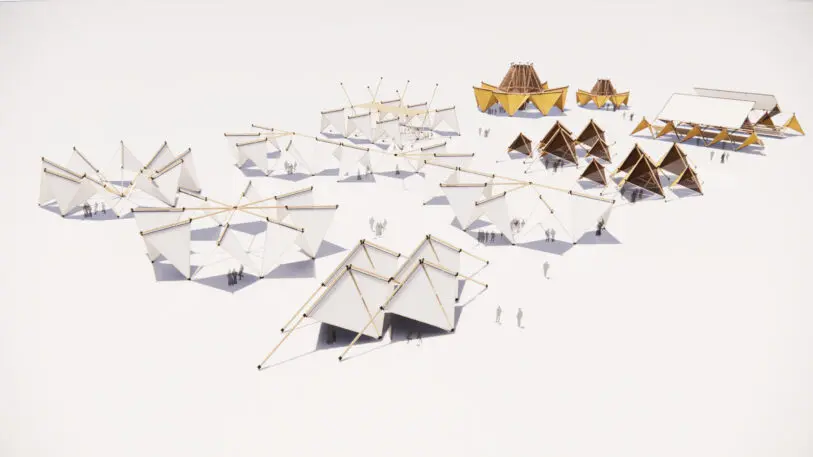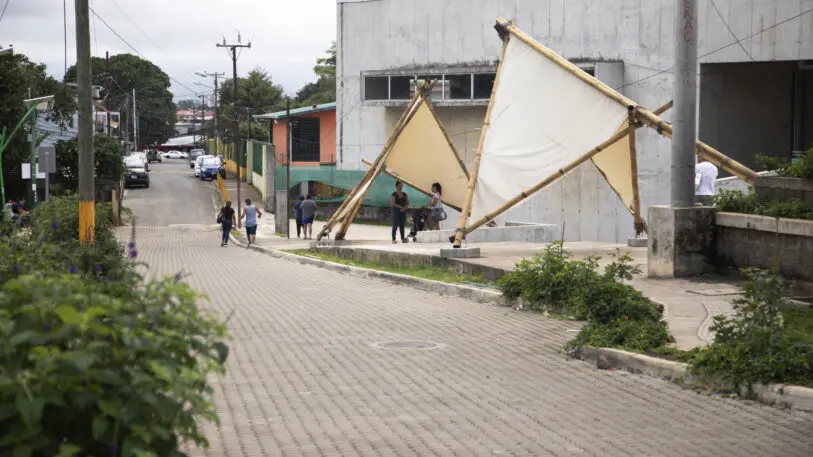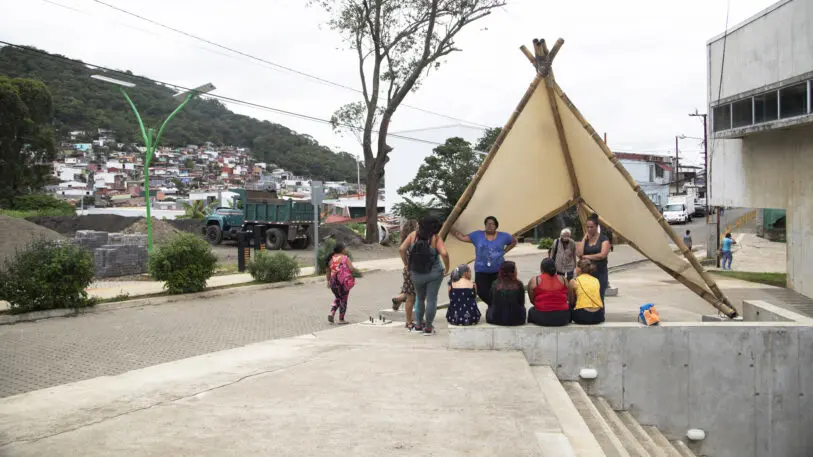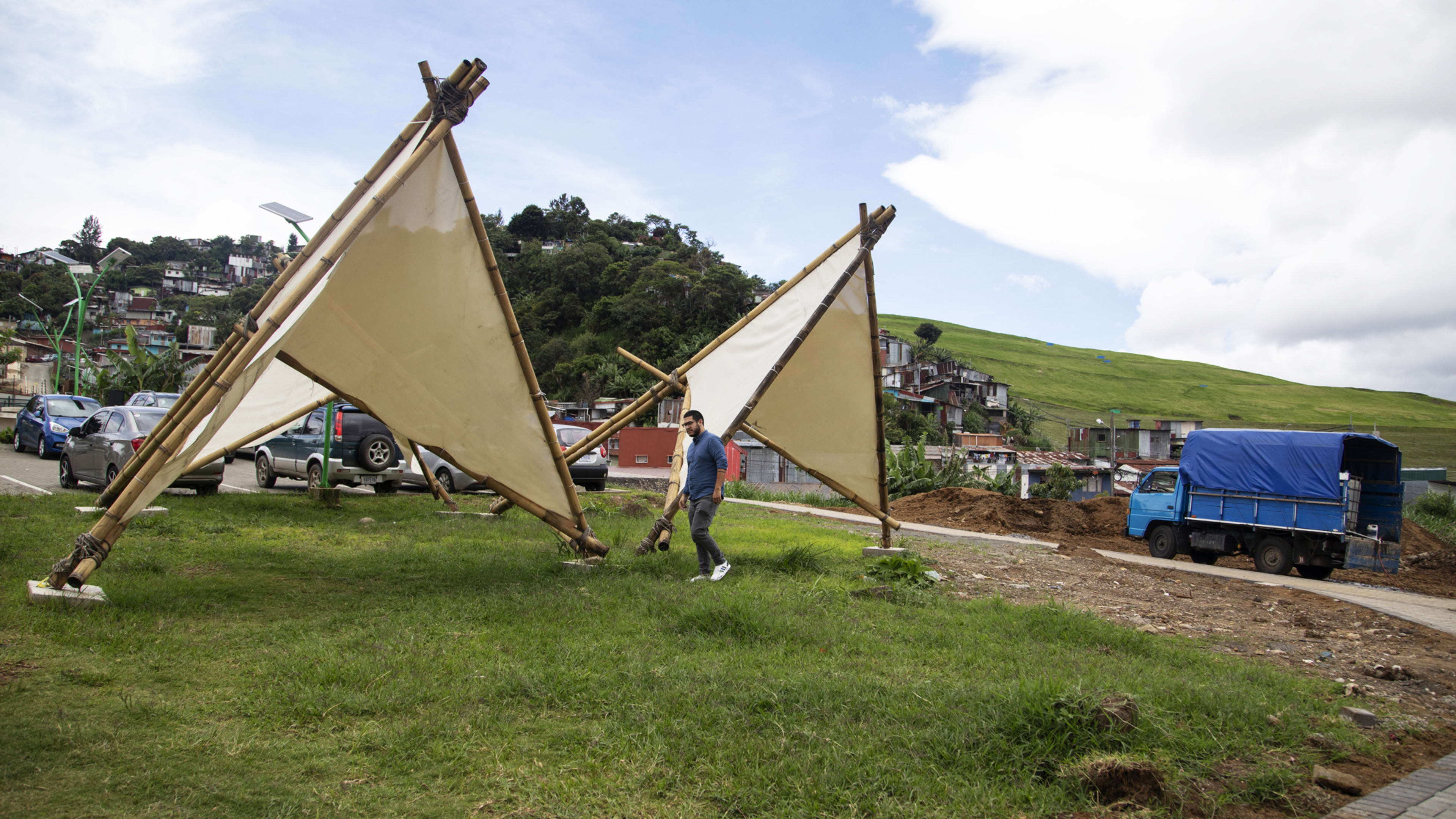Three years ago, the community impact team at the global design, architecture and planning firm Gensler set out to find answers to a question that rises to the very top of every architect’s mind when a heat wave sweeps over a city: What is the fastest, cheapest way to cool down our cities? Or as Amanda Stone, Gensler’s community impact specialist and the project’s research manager, put it: “How can we design a design process to create solutions for the built environment that would combat extreme heat?”
The answer Gensler came up with—an adaptable shading structure that can be configured to fit different kinds of public spaces—is by no means a silver bullet that will help cool cities everywhere in the world. But it is worth dwelling on the process that informed it, which could (and should) become a blueprint for any designer or urban planner working with local communities.

After receiving three internal research grants to more deeply explore the question, the Gensler team got to work, but it found that answering Stone’s original prompt—which puts an emphasis on the process, not the output—was too broad and complex to come from only one team. And so, it was circulated across Gensler’s broader network of designers and researchers, who then tapped into their own networks in search of community partners who may want to participate.
One of those communities was in the Costa Rican city of Curridabat, which has been suffering the consequences of climate change for years. Paula Badilla, sustainability specialist at Gensler’s Costa Rica office and regional resilience leader for Latin America, explains that Curridabat already had a strong climate action plan and had been measuring things like its heat vulnerability index, urban heat island effects and flood risk across the municipality. But the team didn’t simply rely on those datapoints to inform the design process—they actually asked residents where they felt the hottest.

Perhaps unsurprisingly, the heat maps and residents’ responses didn’t always match, so in Curridabat, the community chose the final three locations based on their own experiences of the city: right outside a human development center, close to a sports field, and in a skatepark with one lone tree.

In those three locations, the team developed a brief for a shading structure, which they turned into an internal competition to design what it would look like. More than 80 people participated across Gensler’s Latin American offices. The winning design ticked all the boxes: it was modular and could therefore be accommodated to fit all tree locations; it was easy enough for the community to build it (and feel a sense of ownership in the process); and it could be made with pretty much any locally found materials—in this case bamboo, rope and canvas. As a bonus, it could also provide more than just shade: residents could use the canvas as a projection screen, or replace it altogether with art, or a trellis for ivy.
To measure the impact the structure will have on the community and how they experience heat, the team is planning to install humidity and temperature trackers on all three structures, then will monitor them over the next three months. They’re also hoping to install CCTV-like cameras to understand who is using the structures (children? teens? parents?) and what they’re using them for. They could, of course, survey residents in a few months, but as project manager Ana Thomas notes: “When you ask people, they tell you things you want to hear, but we need the right information about how they really feel.”
Either way, the findings will not only inform future iterations, but also serve as validation for the community. “The one good thing that I have seen in terms of what really works is knowledge sharing,” says Stone. “It’s gathering the data, gathering the best practices, and sharing those with community members, not keeping it insular.”
Recognize your brand’s excellence by applying to this year’s Brands That Matter Awards before the final deadline, June 7.
Sign up for Brands That Matter notifications here.
